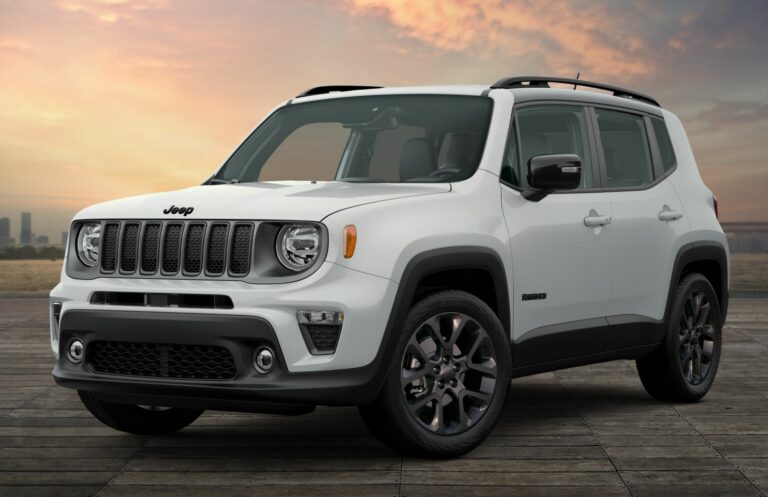Old Jeep Wagoneers For Sale: A Comprehensive Buyer’s Guide
Old Jeep Wagoneers For Sale: A Comprehensive Buyer’s Guide /jeeps.truckstrend.com
Introduction: The Enduring Allure of a Classic Icon
The phrase "Old Jeep Wagoneers For Sale" evokes a specific image for many: a timeless, wood-paneled SUV, a symbol of Americana, luxury, and rugged capability all rolled into one. More than just a vehicle, the Jeep Wagoneer, particularly the beloved SJ generation produced from 1963 to 1991, has transcended its utilitarian origins to become a cherished classic. It was a pioneer, arguably the first true luxury SUV, offering features like air conditioning, power steering, automatic transmissions, and four-wheel drive long before competitors caught on.
Old Jeep Wagoneers For Sale: A Comprehensive Buyer’s Guide
Today, the market for Old Jeep Wagoneers For Sale is vibrant and growing. Enthusiasts, collectors, and those simply seeking a unique piece of automotive history are drawn to their distinctive style, comfortable ride, and surprising off-road prowess. Whether you’re looking for a meticulously restored showpiece, a reliable weekend cruiser, or a challenging restoration project, understanding the nuances of these vintage beasts is crucial. This comprehensive guide will navigate the landscape of Old Jeep Wagoneers For Sale, offering insights, practical advice, and everything you need to know before making your purchase.
The Enduring Appeal of the Wagoneer Legacy
The Jeep Wagoneer’s legacy is deeply rooted in its innovative design and enduring quality. When it debuted in 1963, it broke the mold, combining the utility of a station wagon with the go-anywhere capability of a Jeep. It quickly became popular with suburban families and adventurers alike. The pinnacle of this era, the Grand Wagoneer, introduced in 1984, elevated the concept of the luxury SUV to new heights, becoming a status symbol with its plush interiors, distinctive faux woodgrain siding, and chrome accents.
Their appeal today stems from several factors:
- Timeless Aesthetics: The boxy, yet elegant design, especially with the iconic woodgrain, stands out in a sea of modern, aerodynamic vehicles.
- Robust Construction: Built during an era when vehicles were simpler and more robust, many Wagoneers have stood the test of time.
- Nostalgia: For many, owning an Old Jeep Wagoneer is a journey back to a simpler time, evoking memories of childhood road trips or classic movies.
- Community: A passionate and supportive community of Wagoneer owners exists, offering a wealth of knowledge and camaraderie.
- Investment Potential: Well-maintained or professionally restored Wagoneers have seen significant appreciation in value, making them not just a hobby, but a potential investment.

Understanding the Generations: Navigating the SJ Platform
When searching for "Old Jeep Wagoneers For Sale," you’re primarily looking at the SJ platform, which encompasses a wide range of models and years. While the basic body shell remained largely unchanged from 1963 to 1991, significant mechanical and cosmetic updates occurred over the decades.
- Early Years (1963-1971): Kaiser Jeep Wagoneer: These early models often feature a simpler aesthetic, less chrome, and may be powered by the iconic "Hurricane" inline-six engine or various AMC V8s. Finding these in original, well-preserved condition is rarer.
- AMC Era (1972-1986): American Motors Corporation (AMC) acquired Jeep in 1970 and continued refining the Wagoneer. This period saw the introduction of the Quadra-Trac full-time four-wheel-drive system (revolutionary for its time) and more luxurious interior appointments.
- Grand Wagoneer (1984-1991): Chrysler Era: The "Grand Wagoneer" nameplate became a standalone model in 1984, signifying the most luxurious and sought-after iteration. These models, especially those from the late 1980s, feature the most refined interiors, power everything, and the robust AMC 360 V8 engine. Chrysler purchased AMC in 1987, continuing production of the Grand Wagoneer until 1991, with minimal changes. These are typically the most valuable when considering Old Jeep Wagoneers For Sale.
Understanding the specific year and trim level is crucial as it impacts features, parts availability, and ultimately, value.
Where to Find Old Jeep Wagoneers For Sale
The hunt for Old Jeep Wagoneers For Sale can be an adventure in itself. Here are the most common avenues:
- Online Marketplaces & Auction Sites:
- Bring a Trailer (BaT): Known for high-quality, well-documented vehicles, often fetching premium prices.
- Hemmings Motor News & ClassicCars.com: Reputable sites dedicated to classic vehicles, offering a wide range of conditions.
- eBay Motors: Can be a treasure trove, but requires careful vetting of sellers and listings.
- Facebook Marketplace & Local Classifieds: Good for finding local deals, often project vehicles, but requires more caution.
- Specialized Forums & Social Media Groups:
- Dedicated Wagoneer forums (e.g., IFSJA.org, Wagoneer World) and Facebook groups are excellent resources for finding vehicles and connecting with knowledgeable owners.
- Classic Car Dealerships: Many dealerships specialize in vintage vehicles and may have restored Wagoneers in their inventory. Expect higher prices due to markups and overhead.
- Auctions (Live & Online): Major classic car auctions (e.g., Barrett-Jackson, Mecum) occasionally feature high-end Grand Wagoneers. Local auctions can also yield finds.
- Word of Mouth & Car Shows: Sometimes, the best finds come from unexpected places. Let friends and fellow enthusiasts know you’re looking.
What to Look For: A Comprehensive Buyer’s Checklist
Before you hand over your hard-earned cash for Old Jeep Wagoneers For Sale, a thorough inspection is paramount. These vehicles are nearly 30-60 years old, and age brings specific challenges.
- Rust (The Silent Killer): This is the number one enemy of Old Wagoneers. Check:
- Rocker Panels & Lower Fenders: Especially behind the wheels.
- Tailgate: Prone to rust around the window and hinges.
- Floorboards & Frame Rails: Get underneath with a flashlight.
- Drip Rails & Roof: Check for bubbling paint or holes.
- Under the Woodgrain: Rust can hide beneath the vinyl wood paneling.
- Engine & Drivetrain:
- Leaks: Oil, transmission fluid, power steering fluid, coolant.
- Engine Performance: Listen for knocking, ticking, or excessive smoke. Check oil pressure.
- Transmission: Smooth shifting (automatic) or clutch engagement (manual). Test 4×4 engagement (Quadra-Trac, Selec-Trac).
- Differentials & Transfer Case: Check for leaks or unusual noises.
- Interior Condition:
- Upholstery: Tears, fading, especially on seats and headliner.
- Dash: Cracks are common, especially on older models.
- Woodgrain Trim: Both interior and exterior trim condition.
- Electricals: Test all power windows, locks, gauges, lights, radio, and especially the air conditioning (often non-functional).
- Carpeting: Check for mildew or significant wear, which can indicate water leaks.
- Suspension & Brakes:
- Leaf Springs & Bushings: Look for sagging or worn components.
- Shocks: Leaks or excessive bounce.
- Brakes: Test pedal feel, stopping power, and listen for grinding or squealing. Check for fluid leaks.
- Exterior & "Woodgrain":
- Paint: Fading, peeling, bondo, or signs of poor resprays.
- Chrome: Pitting, rust, or damage.
- Vinyl Woodgrain: Check for peeling, bubbling, or fading. Replacement kits are available but can be costly.
- Documentation:
- Clear title is essential.
- Service Records: A stack of maintenance records indicates a cared-for vehicle.
- Original Manuals: A nice bonus for collectors.
Crucial Advice: Always get a Pre-Purchase Inspection (PPI) from an independent mechanic specializing in vintage vehicles or Jeeps. This small investment can save you thousands down the road.
Project vs. Turnkey: Choosing Your Wagoneer
The "Old Jeep Wagoneers For Sale" market offers vehicles in a wide range of conditions, impacting both price and the level of effort required post-purchase.
- Project Vehicles: These are typically the most affordable, often requiring extensive mechanical, body, and interior work. Ideal for DIY enthusiasts with a garage, tools, and a lot of patience. Be realistic about the time and cost involved; restoration can easily exceed the vehicle’s market value.
- Drivers/Survivors: These are functional vehicles that can be driven as-is but may have cosmetic flaws, minor mechanical issues, or non-functional accessories (like AC). They offer a good balance for those who want to enjoy the vehicle immediately while slowly improving it.
- Restored/Show Quality: These are the most expensive, having undergone professional restoration. They are typically in excellent mechanical and cosmetic condition, ready for shows or immediate enjoyment. While the initial cost is higher, they offer peace of mind and significantly less work.
Common Challenges and Solutions for Wagoneer Owners
Owning an Old Jeep Wagoneer comes with its quirks, but most challenges have known solutions.
- Fuel Economy: These are heavy, V8-powered vehicles from a different era. Expect 10-15 MPG on a good day. Solution: Embrace it or consider engine swaps (though this impacts originality).
- Parts Availability: For common wear items (brakes, suspension, engine parts), availability is generally good thanks to shared AMC/Jeep components. However, specific interior trim, electrical components, or unique body panels can be challenging to source. Solution: Join owner forums, explore specialized suppliers, and be patient.
- Electrical Gremlins: Aging wiring and connections can lead to intermittent electrical issues. Solution: A good wiring diagram, patience, and a multimeter are your friends. Professional diagnosis may be necessary.
- Rust Remediation: If the vehicle has significant rust, proper repair is labor-intensive and costly. Solution: Address rust early and thoroughly; don’t just cover it up.
- Finding Qualified Mechanics: Not all mechanics are familiar with vintage vehicles. Solution: Seek out shops specializing in classics or those with experience working on older Jeeps.
The Investment Perspective
Over the past decade, values for Old Jeep Wagoneers For Sale, particularly the Grand Wagoneer, have seen a significant increase. What was once an affordable classic is now a solid investment, especially for well-preserved or expertly restored examples. While prices can fluctuate, their iconic status and limited availability suggest continued strong demand. However, be mindful that restoration costs can quickly outstrip a vehicle’s value if not managed carefully. The best "investment" is often the enjoyment derived from owning and driving such a unique piece of automotive history.
Concluding Summary: Embracing the Wagoneer Lifestyle
The journey of finding and owning Old Jeep Wagoneers For Sale is more than just a transaction; it’s an entry into a passionate community and a commitment to preserving a piece of automotive heritage. From their pioneering role as the first luxury SUV to their enduring status as a pop culture icon, Wagoneers offer a unique blend of vintage charm, robust capability, and surprising comfort.
While challenges like rust, fuel economy, and sourcing specific parts exist, the rewards of cruising in a classic Wagoneer—turning heads everywhere you go and experiencing a driving sensation unlike anything modern—far outweigh them. By arming yourself with knowledge, exercising patience, and conducting thorough inspections, you can find the perfect Old Jeep Wagoneer to bring home, ensuring many years of classic motoring enjoyment. Embrace the adventure; the perfect wood-paneled dream machine is waiting for you.
Old Jeep Wagoneers For Sale: Estimated Price Guide
Please note: Prices are highly variable based on location, specific year, originality, mileage, and market demand. This table provides a general estimate.
| Condition Category | Description | Estimated Price Range (USD) |
|---|---|---|
| Project Vehicle | Description: Requires significant mechanical, bodywork, and interior restoration. May have major rust, non-running engine, or significant electrical issues. Not roadworthy without substantial work. | $5,000 – $15,000 |
| Driver Quality | Description: Runs and drives reliably, suitable for regular use. May have minor cosmetic flaws (faded paint, minor dings, worn interior), some non-functional accessories (e.g., AC), or minor mechanical quirks. Some rust possible. | $15,000 – $35,000 |
| Good Survivor | Description: Well-preserved original condition. Minimal rust, good paint, clean interior with minor wear. All major systems functional. May not be perfect, but very presentable and reliable. | $35,000 – $55,000 |
| Restored/Show Quality | Description: Professionally restored to original or better-than-original condition. Excellent paint, chrome, interior, and mechanicals. No significant rust or issues. Ready for shows or immediate, worry-free enjoyment. | $55,000 – $100,000+ |
Frequently Asked Questions (FAQ) about Old Jeep Wagoneers For Sale
Q1: What years are considered "old" Jeep Wagoneers?
A1: Generally, "old" Jeep Wagoneers refer to the SJ platform produced from 1963 to 1991. The most sought-after models are the Grand Wagoneers from 1984-1991.
Q2: Which Wagoneer model is the most desirable?
A2: The Grand Wagoneer (1984-1991) is widely considered the most desirable due to its more luxurious features, updated interiors, and robust AMC 360 V8 engine. Late 1980s models tend to command the highest prices.
Q3: Are parts readily available for old Wagoneers?
A3: For many common mechanical and powertrain components, parts availability is surprisingly good due to shared AMC and Chrysler parts bins. However, specific interior trim pieces, unique electrical components, and certain body panels can be challenging and expensive to source. A strong aftermarket exists for restoration parts.
Q4: What’s the typical fuel economy of an old Wagoneer?
A4: Old Jeep Wagoneers are not known for their fuel efficiency. Expect anywhere from 10 to 15 miles per gallon (MPG), depending on the engine, driving conditions, and vehicle maintenance.
Q5: Can an old Wagoneer be a reliable daily driver?
A5: With proper maintenance and, often, some restoration work, an old Wagoneer can be a reliable driver. However, due to their age, fuel economy, and lack of modern safety features, many owners prefer to use them as weekend cruisers or secondary vehicles rather than primary daily commuters.
Q6: What’s the biggest issue to look out for when buying an old Wagoneer?
A6: Rust is by far the biggest concern. Check rocker panels, lower fenders, the tailgate, floorboards, and frame rails thoroughly. Rust repair can be extremely costly and complex.
Q7: Are the 4×4 systems reliable?
A7: The Quadra-Trac and Selec-Trac 4×4 systems used in Wagoneers are generally robust if properly maintained. However, like any older mechanical system, they can develop leaks or require servicing. Always test the 4×4 engagement during an inspection.
Q8: Is the woodgrain real wood?
A8: No, the iconic woodgrain on the side of Grand Wagoneers and later models is actually a vinyl decal applied over sheet metal. It’s durable but can fade, peel, or bubble over time. Replacement kits are available.




